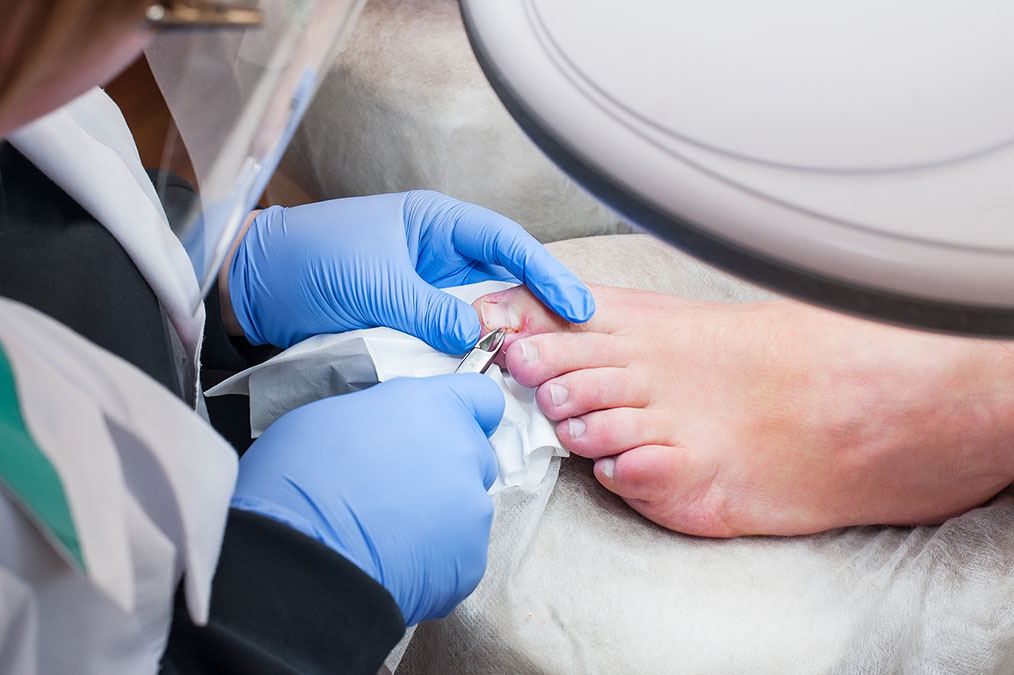 Traditional nail fungus treatments, including oral antifungal medications and topical creams, often take a long time to show results and can have side effects.
Traditional nail fungus treatments, including oral antifungal medications and topical creams, often take a long time to show results and can have side effects.
In the search for a safer, quicker, and more effective approach, a recent study published in Applied Physics Letters revealed a revolutionary new method.
A PP-CAPJ device, or Portable Pulsed Cold Air Plasma Jet, is an advanced technological tool that generates cold plasma air.
It uses electrical energy to ionize air, creating a plasma jet. This ionized air is composed of reactive species like radicals, ions, and electrons. These are the elements that do the work.
The plasma is generated in pulses, meaning it is released in short, controlled bursts. Unlike traditional hot plasma, the plasma is at or near room temperature, making it safe for medical treatments.
Since researchers have already proven that this device could kill bacteria, fungi, and viruses, the researchers for this study set out to see if it could kill Trichophyton rubrum (T. rubrum), the primary culprit behind nail fungus.
They obtained T. rubrum cultures from the Chinese Academy of Medical Sciences and grew it on specialized media at a controlled temperature.
They then asked healthy adult volunteers to donate their toenails, after excluding participants with a prior history of fungal infections or use of nail cosmetics. These nails were then sterilized and infected with T. rubrum to simulate nail fungus.
The PP-CAPJ device was applied to both solutions of T. rubrum spores and infected nails at varying distances and durations.
The process worked as well as they hoped it might.
-
1. In fungal solutions, the PP-CAPJ device brought about a significant reduction in spore germination after 300 spark discharges.
2. When applied to infected nails, the device effectively killed T. rubrum. Nails with a thickness of 1.5 mm showed almost complete inactivation of the fungus after 300 discharges.
3. The device killed the fungus by destroying their cell membranes.
If these findings can be replicated by future studies on nails that are still attached to toes and fingers, this is an important scientific breakthrough.

 Overcoming IBD
Overcoming IBD Multiple Sclerosis
Multiple Sclerosis Banishing Bronchitis
Banishing Bronchitis Gum Disease Gone
Gum Disease Gone Overcoming Onychomycosis
Overcoming Onychomycosis Neuropathy No More
Neuropathy No More The Prostate Protocol
The Prostate Protocol Brain Booster
Brain Booster
 Ironbound
Ironbound
 Solution for Shingles
Solution for Shingles
 The Bone Density Solution
The Bone Density Solution
 The Ultimate Healing Protocol
The Ultimate Healing Protocol
 The Parkinson's Protocol
The Parkinson's Protocol
 The Chronic Kidney Disease Solution
The Chronic Kidney Disease Solution
 Overthrowing Anxiety
Overthrowing Anxiety The Fatty Liver Solution
The Fatty Liver Solution The Hypothyroidism Solution
The Hypothyroidism Solution
 The End of Gout
The End of Gout The Blood Pressure Program
The Blood Pressure Program
 The Oxigized Cholesterol Strategy
The Oxigized Cholesterol Strategy
 Stop Snoring And Sleep Apnea Program
Stop Snoring And Sleep Apnea Program
 The Arthritis Strategy
The Arthritis Strategy The Vertigo & Dizziness Program
The Vertigo & Dizziness Program The 3-Step Diabetes Strategy
The 3-Step Diabetes Strategy Hemorrhoids Healing Protocol
Hemorrhoids Healing Protocol The Erectile Dysfunction Master
The Erectile Dysfunction Master Weight Loss Breeze
Weight Loss Breeze The IBS Program
The IBS Program The Insomnia Program
The Insomnia Program The Migraine and Headache Program
The Migraine and Headache Program The Neck Pain Solution
The Neck Pain Solution The Menopause Solution
The Menopause Solution The Ejaculation Master
The Ejaculation Master The TMJ Solution
The TMJ Solution The Acid Reflux Solution
The Acid Reflux Solution The Fibromyalgia Solution
The Fibromyalgia Solution The Psoriasis Strategy
The Psoriasis Strategy